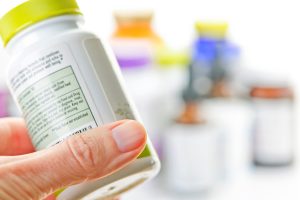There is a 75% probability every woman will develop a vaginal yeast infection at least once. While itchy and uncomfortable, they are also relatively easy to treat with topical creams you can find at your local pharmacy. Choosing the suitable yeast infection treatment cream will alleviate the symptoms and help clear the infection.
Yeast Infection Treatment Cream: Active Ingredients
When you purchase medication, you will usually notice two separate lists of ingredients. The active ingredient or ingredients are listed at the top of the drug information section. These are the compounds that treat your symptoms or the underlying infection.
Inactive ingredients are listed on the bottom, creating a vehicle for active ingredients. They may include things like fragrances, flavors, or colors.
Most antifungal creams contain one or two ingredients: an antifungal, a local anesthetic, or both.
Antifungals
As mentioned, yeast infections are caused by an overgrowth of candida fungus. The only way to eliminate a yeast infection is to kill the fungus with an antifungal. Most antifungal medication ends in the suffix –azole, like clotrimazole, miconazole, tioconazole, and fluconazole. When looking for a cream to treat your yeast infection, make sure one of these is listed under active ingredients.
Anti-inflammatories
Much of the discomfort of a yeast infection happens because the tissues of the vagina and vulva become inflamed. One way to relieve the discomfort is by reducing inflammation. Corticosteroids are drugs used to reduce inflammation and suppress immune responses. Hydrocortisone is a mild topical corticosteroid that you may see in yeast infection creams to help alleviate symptoms. However, it does not cure the infection itself.
Anesthetics
While killing the fungus causing the infection will provide relief, it might not be immediate. That’s why many yeast infection treatment creams also include a local anesthetic to help ease the symptoms while the infection clears up. A local anesthetic numbs the area to which it is applied. Examples of local anesthetics you might find in OTC yeast infection treatments include benzocaine and resorcinol.
Like anti-inflammatory medications, anesthetics soothe the symptoms of a yeast infection without actually treating the disease. You must be careful when selecting a treatment, as some only contain painkillers or anti-inflammatories without the antifungals. If you have to choose, always go with the antifungal.
Yeast Infection: Route of Treatment Administration
In most cases, you can treat candidiasis by topical medication to the affected area. However, in the case of a severe or more complicated infection, you may have to take oral medication.
Oral
Fluconazole is an oral antifungal medication used to treat various fungal infections, including yeast infections. You can only get fluconazole with a prescription from your doctor.
Most women can treat yeast infections at home with OTC yeast infection medicines and don’t visit the doctor. However, if you have a particularly severe infection that is not clearing up with OTC vaginal creams, you must talk to a healthcare professional. The oral medication may be more effective.
Suppository
A suppository is a pill or tablet inserted directly into your vagina. These pills effectively target the infection at the source, but you may require fewer doses to clear your infection and notice that your symptoms improve faster. For instance, you can use boric acid suppositories to prevent yeast infections from recurring.
Most vaginal suppositories used in treating yeast infections are available at your local pharmacy with applicators that help you insert them correctly.
Cream
Topical creams are the most popular way to treat a yeast infection. While a doctor can prescribe a prescription cream, many OTC brands are also available. Creams are easy to apply, especially to the external areas of your vagina. Many suppository treatments also include a tube of antifungal gel/cream for relief.
Creams are generally available in three doses: 1-day, 3-day, or 7-day vaginal candidiasis treatment. One of the downsides of using a cream is that it might be messier than other methods and ooze into your underwear throughout the day. However, many brands have started selling creams in pre-filled applicator tubes to simplify the process. If you are worried about it oozing out, apply it before bed.
Best OTC Yeast Infection Treatment Creams
Several pharmaceutical brands are known for producing topical yeast infection medication, including Monistat and Vagisil. However, you can also buy generic versions of these medications that are just as effective at a lower price.
Clotrimazole
Clotrimazole treats many fungal ailments, including athlete’s foot and oral thrush, a yeast throat and mouth infection. Vaginal clotrimazole is usually sold under the name Clotrimazole-3 (because it is a 3-day yeast infection therapy) or Gyne-Lotrimin.
Miconazole
Miconazole is one of the most popular antifungal medications for candidiasis. The 1-day, 3-day, and 7-day doses of Monistat all use miconazole, as do the 3-day and 7-day dose yeast infection therapy of Vagistat. You can also get generic miconazole at various strengths from most pharmacies. The 1-day Monistat treatment includes a miconazole suppository and a miconazole cream for external relief.
Tioconazole
Tioconazole is most commonly used in 1-dose infection therapy, including Vagistat-1, the cream-only version of Monistat-1, and generic pharmacy brands. It is usually available at a higher concentration of 6.5% compared to miconazole’s 2-4% standard concentration.
Read also: Everything To Know About Using Metronidazole for Yeast Infection
How to Properly Apply Yeast Infection Cream
Most vaginal antifungal gel/creams now come with pre-filled applicators to help you get the cream inside your vagina to treat the infection thoroughly.
Lay on your back and pull your knees up to your chest. Put the applicator into your vagina and press the plunger downward until the applicator tube is empty.
Some treatments include an extra tube of cream for the external part of your vagina. Apply the cream to your fingers and spread it over the affected area.
If your cream does not come with an applicator, you will also have to make sure to apply it internally with your fingers or purchase applicators separately.
When to See a Doctor
In general, you should be able to treat candidiasis at home without ever needing to visit a doctor. However, in some cases, you should consult with a medical professional.
This is the first time you’ve had a yeast overgrowth infection.
Symptoms of a yeast overgrowth infection may mimic other infections in your genital region, including UTIs or bacterial vaginosis. If you’ve never had candidiasis, you’ll want to talk to your doctor to rule out other possible causes.
You develop symptoms after having sex with a new partner for the first time.
Sometimes, the symptoms of a sexually transmitted infection (STI) can be very similar to a yeast overgrowth infection.
If your symptoms appear shortly after having penetrative intercourse with a new partner for the first time, it’s best to be safe and go over your symptoms with a doctor to determine whether you need to be tested for an STI.
You have severe symptoms
If you have more severe symptoms, you may need a prescription strength treatment from your doctor to eliminate your infection. Severe symptoms include swelling, sores, cracks, extreme redness, and intense itching.
You may be at higher risk for a severe yeast overgrowth infection if you are pregnant, immunocompromised, or have uncontrolled diabetes.
Your symptoms do not go away with OTC treatments
If you’ve tried an OTC treatment but are still experiencing symptoms, your infection might be caused by a strain of drug-resistant yeast, a fungus other than candida, or a urinary tract disease.
It would help if you talked with your doctor to determine a course of treatment that will be effective for your particular infection.
Your symptoms worsen, or you develop new symptoms.
New or worsening symptoms could indicate that your yeast overgrowth infection is resistant to common treatments or is caused by something other than yeast. Your doctor can help you determine what is causing your symptoms and how to treat them.
You’ve had more than 4 yeast overgrowth infections in one year
Recurrent yeast overgrowth infections may indicate an underlying health condition that makes it harder for your body to maintain a proper balance of yeast and bacteria or another underlying gynecological problem.
It would help if you worked with your doctor to determine what keeps causing your infection to come back and how to prevent future flare-ups.
You have another condition that could cause complications
Pregnancy, diabetes (especially uncontrolled diabetes), and immune suppression can increase your risk factors of developing severe vaginal yeast infections.
If you have one of these conditions and develop candidiasis, contact your doctor to make a plan to prevent your condition from worsening.
As specialists in the female reproductive tract, a gynecologist is the best person to see about candidiasis. However, a general practitioner can answer any questions, prescribe a more vital antifungal medication, or refer you to a gynecologist if you don’t already have one.
Our telehealth providers at Doctor Alexa allow you to seek medical advice on your schedule from the comfort of your own home. Set an appointment today for any questions or concerns regarding a suspected or diagnosed candidiasis.
Read also: Yeast Infection Discharge Color and What It Means
Frequently Asked Questions
Hydrocortisone is a topical steroid used to combat itching. It will undoubtedly help with the itching and discomfort associated with your vaginal yeast infections but won’t treat the underlying infection.
You can use hydrocortisone in combination with an antifungal to clear the infection and manage the symptoms.
You will not need prescription medication to treat candidiasis. Most treatments available over the counter are incredibly effective at eliminating the infection.
However, if you have a particularly severe case, an infection not caused by candida or an infection caused by a drug-resistant strain of candida, a prescription treatment may be more effective.
You can reduce the itch from candidiasis with steroids like cortisone or hydrocortisone or topical anesthetics like benzocaine or resorcinol.
Though yeast overgrowth infections are commonly associated with vaginas, people with penises are also susceptible to yeast overgrowth infections. Candida lives on moist parts of your skin.
People with uncircumcised penises may be more sensitive to an overgrowth of candida under the foreskin, causing a yeast infection on the tip of the penis. This is known as a penile yeast infection or candida balanitis.





